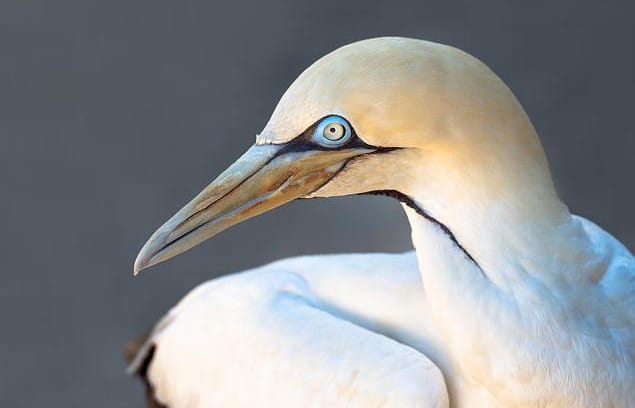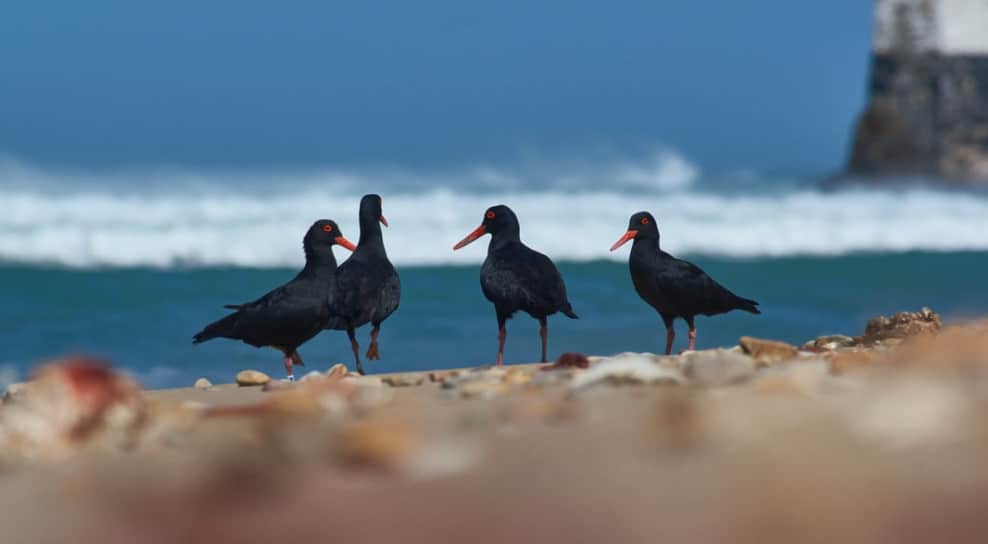“Roberts Birds of Southern Africa” is a well-known and comprehensive field guide for birdwatching in the southern African region. It’s considered one of the most authoritative references for bird identification in this area.
The book is authored by Hugh Chittenden, Greg Davies, and Ingrid Weiersbye, and it’s named after Austin Roberts, a prominent South African ornithologist.
Today will dive further into this book with a review and more details, so let’s fly!
But first, What Is The Roberts Birds Of Southern Africa Book All About?
 Buy Now →
Buy Now → Picture this: a book that’s not just a guide but a ticket to a feathery adventure, authored by the dynamic trio Hugh Chittenden, Greg Davies, and Ingrid Weiersbye. And speaking of legendary names, Austin Roberts himself—yep, the bird guru—inspires this bird bible of over 1000 bird species in Southern Africa.
Whether you’re a rookie or a pro, it’s got your back, and think of it as your GPS through the jungle of feathers and beaks, making sure you’re never lost in translation.
It’s like a treasure trove of bird stories that’ll have you saying, ‘Did you know that the African hoopoe can rock a mohawk like no other bird?’ Yep, that’s the kind of juicy info you’re in for.
This book has evolved like a Pokémon, transforming through different editions to keep up with the times. Each edition typically includes updated information about bird species of Southern Africa, distribution, plumage variations, and other relevant details.

And when it comes to accuracy, this book is like your friend who never misses a birthday—always spot on. It’s like the grandmaster of bird ID, making sure you don’t confuse a lark with a lorikeet.
Seriously though, this book has the birdwatching community wrapped around its little finger—or should I say wing?
Are you thinking about buying binoculars to have a good look at all the magnificent birds of Africa?
What can you find in the books of Roberts birds of Southern Africa?
Within the pages of the ‘Roberts Bird Guide of Southern Africa, a roadmap guides enthusiasts through the diverse avian landscapes of the region.
It includes:
Taxonomic Navigation:
At the core of its structure lies a sequenced taxonomic order. Each avian species, thoughtfully arranged within its respective family, is a testament to the web of evolution.
This alignment offers readers a pathway to understanding the broader context of species classification and interconnectivity.
Habitat Integration:
Beyond taxonomy, the guide recognizes the ecological importance of habitats.
It is organized by habitat type—ranging from arid landscapes to lush woodlands—enabling enthusiasts to seamlessly navigate the guide based on the distinct environments where specific bird species thrive.
This contextual approach situates readers within the avian ecosystems, enhancing their ability to identify and comprehend the avifauna’s dynamic interplay with its surroundings.
Visual and Navigational Aids:
The ‘Roberts Bird Guide‘ is a visual masterpiece, augmented by gorgeous illustrations, vivid photographs, and informative distribution maps.
These visual cues act as virtual signposts, directing readers toward the sought-after species.
A hallmark of user-centric design, color-coded sections expedite the identification process, empowering users to swiftly pinpoint the relevant segment based on a bird’s dominant hue.
 Buy Now →
Buy Now → Indices as Compass Points:
Within the book’s strategic design, indices offer a valuable compass to find more information.
Users can locate a bird species by its English, scientific, or Afrikaans name, eliminating ambiguity and streamlining the research process.
This index-driven approach makes it user-friendly and accessible.
More Insights and stories:
Extra insights and anecdotes offer a profound connection to the avian world, enriching the reader’s experience by delving into behaviors, habits, and historical context.
This contextual layering elevates the guide to a level beyond pure taxonomy, fostering a holistic understanding of the avian inhabitants.
In essence, the book “Roberts Bird of Southern Africa” offers a multifaceted approach, combining taxonomic precision, ecological relevance, visual aesthetics, and user-friendly features.
Not to confuse the 2 books of Roberts Birds.
- So today, we will discuss the Roberts Bird Guide Second Edition, which was published in February 2017, by three authors, and not the one below, published in October 2007 by 2 different authors ( Hugh Chittenden, Guy Upfold), as there might be some confusion there on which one is the newest version. Just so you know.

Roberts Bird Guide: A Comprehensive Field Guide Over 950 Bird Species in Southern Africa
Buy Now →Roberts Birds Of Southern Africa- A Review!
Although this book is considered a classic amongst birdwatchers for Southern Africa, there could be some cons, and will dive into them!
 Buy Now →
Buy Now → 
Pros
- This is a very expanded book on Southern African birds and also covers all subspecies and age categories
- species accounts are very thorough, with a wide range of plumage variations
- The (large) pictures have brief notes on field marks to look for, and cautions that certain features may not always be visible, good to have as well!
- clear comparison features or colors of birds
- Most of the drawings are very well done, with attention to posture and typical behavior of the bird
- the vinyl-like cover of the book seems to protect it well when you use it a lot
- user-friendly and accessible
Cons
- This guide is a little bit too bulky to take on a backpacking tour or when traveling light.
- the details can be overwhelming for beginners
- A hardcopy doesn’t seem available anymore
My conclusion:
Although details can be a bit overwhelming, for me this book is a masterpiece, in my opinion. It periodically displays a special section with comparisons as well. For example, head-only shots of hornbills or comparison images of nightjars, make it even easier to identify species.
There is an app version of this Roberts Birds book, if the weight of the book is a big concern, and it includes bird sounds!
Check out the price and more details of this birds book here.related article:
- How to identify birds of south africa?
- The African Hoopoe bird, how to recognize it?
- How to identify baby birds?
- What are the 19 most common birds of Southern Africa?
My Final Conclusion.
I hope that you enjoyed this review on the Roberts Birds of Southern Africa and if you have any more questions, please feel free to ask them down below in the comment section or visit me on (one of ) my social media pages below for more pictures and stories about my travels to Africa!
I wish you happy birdwatching!
Kind regards
Lizzy
I now have a YouTube channel as well!
YouTube
Hello Africa travellers!
Who am I? Well, the least you can say is that I am quite crazy about Africa, its nature, its climate, its culture, and more.
As a young woman in my twenties, I had already traveled to several African countries by traveling along in an overlander on my own and mostly camping ( or glamping ) and just fell in love with the diversity of it all.
So much, so that at the age of 26, I went back to university to study biology, which, unfortunately, I couldn’t finish because of health reasons (yes, I got sick from a tropical disease, oh cynicism). But this did not stop my dream of traveling back to Africa several times, and I still do.
My dream was back then to leave Europe and go study animal behavior, especially the elephants (sure, that’s every girl’s dream haha), but I am also very much intrigued by hyenas and other “ugly African animals“.
So, I “kind of” have a little bit of a scientific approach to my articles, when I write about African birds, for example. And most of all: the passion.
But life goes on, you move from one side of the country to the other, you get sick again and top it off with lower back problems, and before you know it, you are over 50 hahaha!
Now, I still travel to Africa, but take it a bit “easier” than the good old camping days, and stay in comfortable, yet affordable accommodations, together with my husband Wouter.
These are some of the countries I have traveled to: Kenya, Tanzania, Zanzibar, Malawi, Zambia, Zimbabwe, South Africa, Namibia, Botswana, Tunisia, and a little bit of Lesotho LOL .
While clearly not being African territory, but Spanish, I also visited Gran Canaria and Tenerife, and location-wise, I consider them “African”, because of their climate and nature, sue me :-p
The last trip I took was to South Africa in the year 2023, and it sure got the fevers for Africa back! From the Barberton mountains to the Drakensberg and the Southcoast, one month wasn’t enough at all to see the whole country, so we’ll be back! At ease and with a little bit more luxury than in my younger days haha!
I wish you happy travels!
Kind regards
Lizzy



I don’t know anything about bird species, but I found this to be quite interesting. I like that you included the video, as there were many birds that I had not seen before. The one that really caught my attention was the Pin-Tailed Whyta. Wow, that was an amazing bird.
Your review of the book is comprehensive and helpful to those looking for a guide to bird watching.
Hi Jarie,thank you for your comment and I hope that I gave you some passion about African birds!
Kind regards,
Lizzy
I’ve always been curious about birdwatching, and this book sounds intriguing! Could you share if the book includes practical tips for beginners like me, or is it more focused on stories and anecdotes about the birds?
As a bird enthusiast, I was thrilled to read this review. I’ve been using ‘Roberts Birds of Southern Africa’ for a while now, and it’s been an incredible resource. The illustrations and detailed descriptions really help with bird identification. Anyone else finding it valuable?
This review truly captures the essence of the book. Exploring the world of birds through stories seems like a wonderful way to connect with nature. It’s not just a field guide, but a journey into their lives. What are your thoughts on this approach?
I’ve been meaning to delve into birdwatching, and this book seems like a great starting point. The way it combines bird facts with stories sounds engaging.
I’ve been an avid birder for years and picked up ‘Roberts Birds of Southern Africa’ last year. The mix of detailed information and anecdotes truly deepens the birdwatching experience. It’s more than just a guidebook. Anyone else resonate with this?
Have a good day.
Hello there!
Great to see a fellow bird enthusiast! This book is suitable for beginners as well as more advanced bird watchers, it helps in so many ways and is the most thorough on the market for Southern Africa for sure!
Kind regards
Lizzy